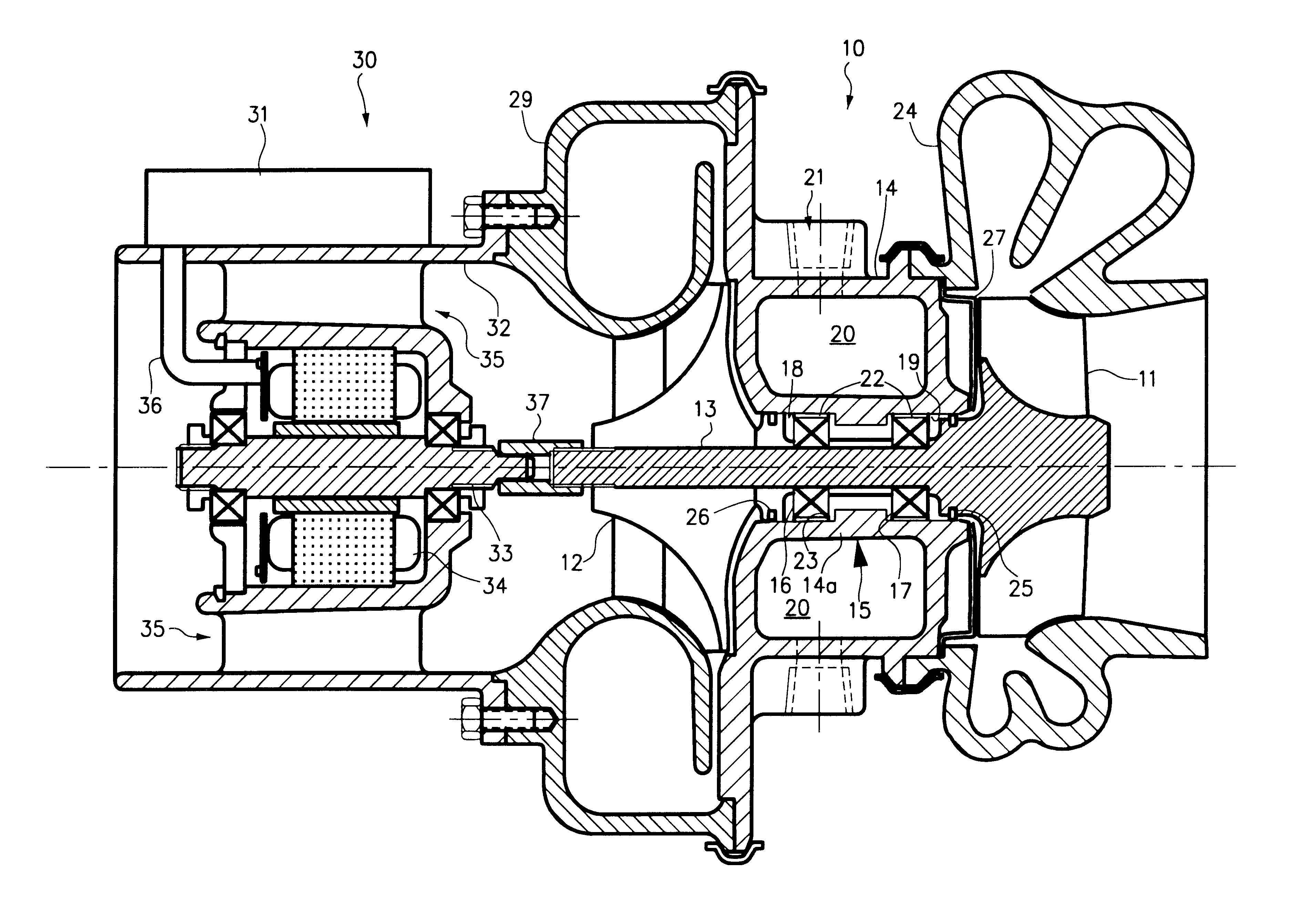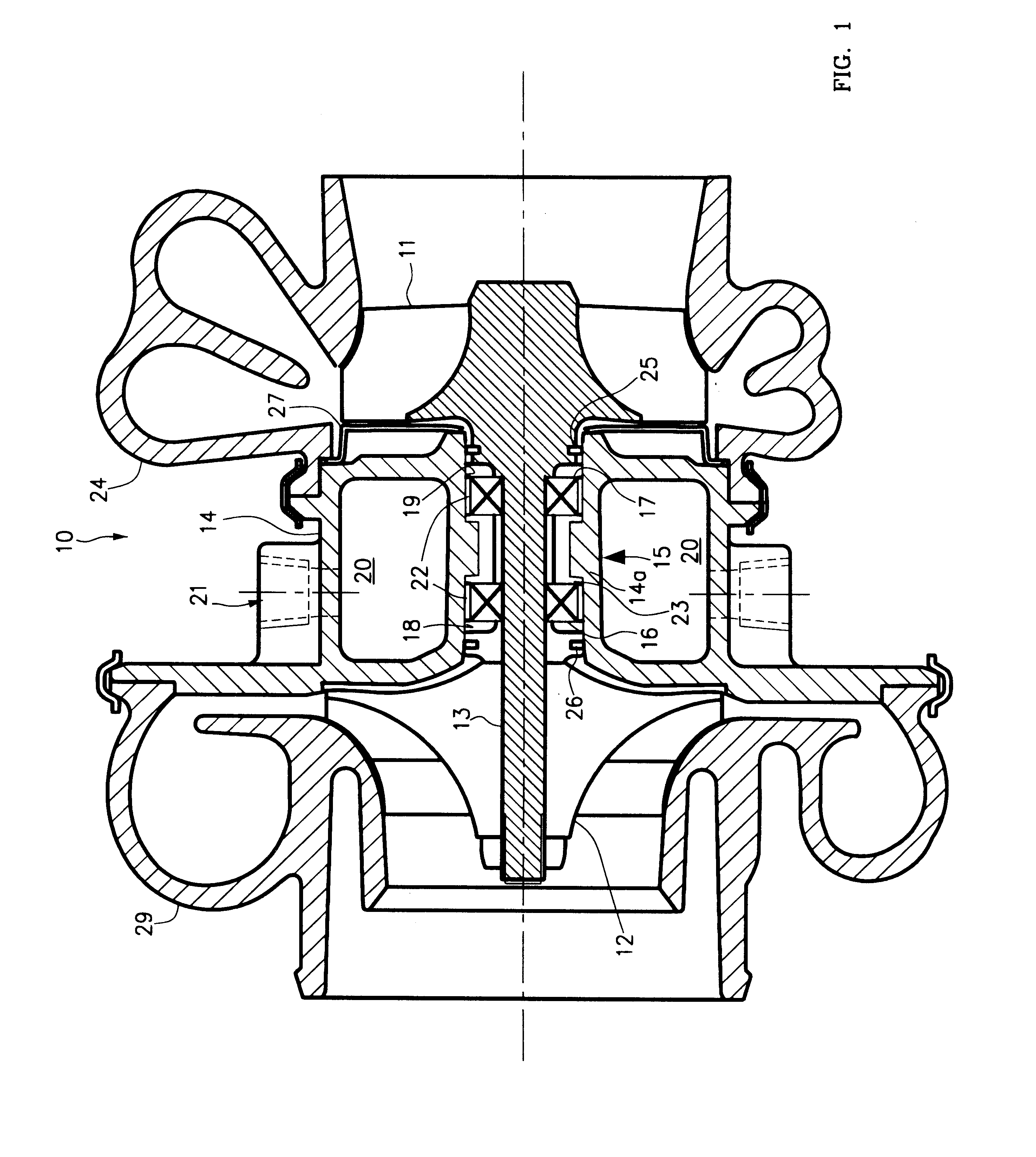Compact turbocharger
a turbocharger and compact technology, applied in the field of turbochargers, can solve the problems of reducing the mechanical efficiency of turbochargers, and the differential speed between the sleeve bearing and the rotor is the very high rotative speed of the rotor, so as to reduce the thermal expansion of the shaft, and increase the protection of the anti-friction ball bearings
- Summary
- Abstract
- Description
- Claims
- Application Information
AI Technical Summary
Benefits of technology
Problems solved by technology
Method used
Image
Examples
Embodiment Construction
The invention, as illustrated in FIG. 1, provides a compact turbocharger 10 including an exhaust gas-driven turbine wheel 11 and a compressor wheel 12 on a rotatable shaft 13 carried by a bearing housing 14 and bearing system 15 that includes a pair of anti-friction ball bearings 16, 17.
The bearing housing 14 comprises an inner bearing-engaging portion 14a with two bearing engagement surfaces 18, 19 for engagement with the outer races of the anti-friction ball bearings 16, 17. As illustrated in FIG. 1, the bearing housing 14 forms a coolant water jacket 20 for cooling the two bearing engagement surfaces 18, 19 and maintaining satisfactory operating temperatures of the anti-friction ball bearings 16, 17. The bearing housing 14 has an inlet 21 for coolant that may be connected with the coolant system of an internal combustion engine so engine coolant may be circulated through the coolant water jacket 20 of the turbocharger. Thus, the bearing housing 14 contains a coolant water jacket ...
PUM
 Login to View More
Login to View More Abstract
Description
Claims
Application Information
 Login to View More
Login to View More - R&D
- Intellectual Property
- Life Sciences
- Materials
- Tech Scout
- Unparalleled Data Quality
- Higher Quality Content
- 60% Fewer Hallucinations
Browse by: Latest US Patents, China's latest patents, Technical Efficacy Thesaurus, Application Domain, Technology Topic, Popular Technical Reports.
© 2025 PatSnap. All rights reserved.Legal|Privacy policy|Modern Slavery Act Transparency Statement|Sitemap|About US| Contact US: help@patsnap.com



